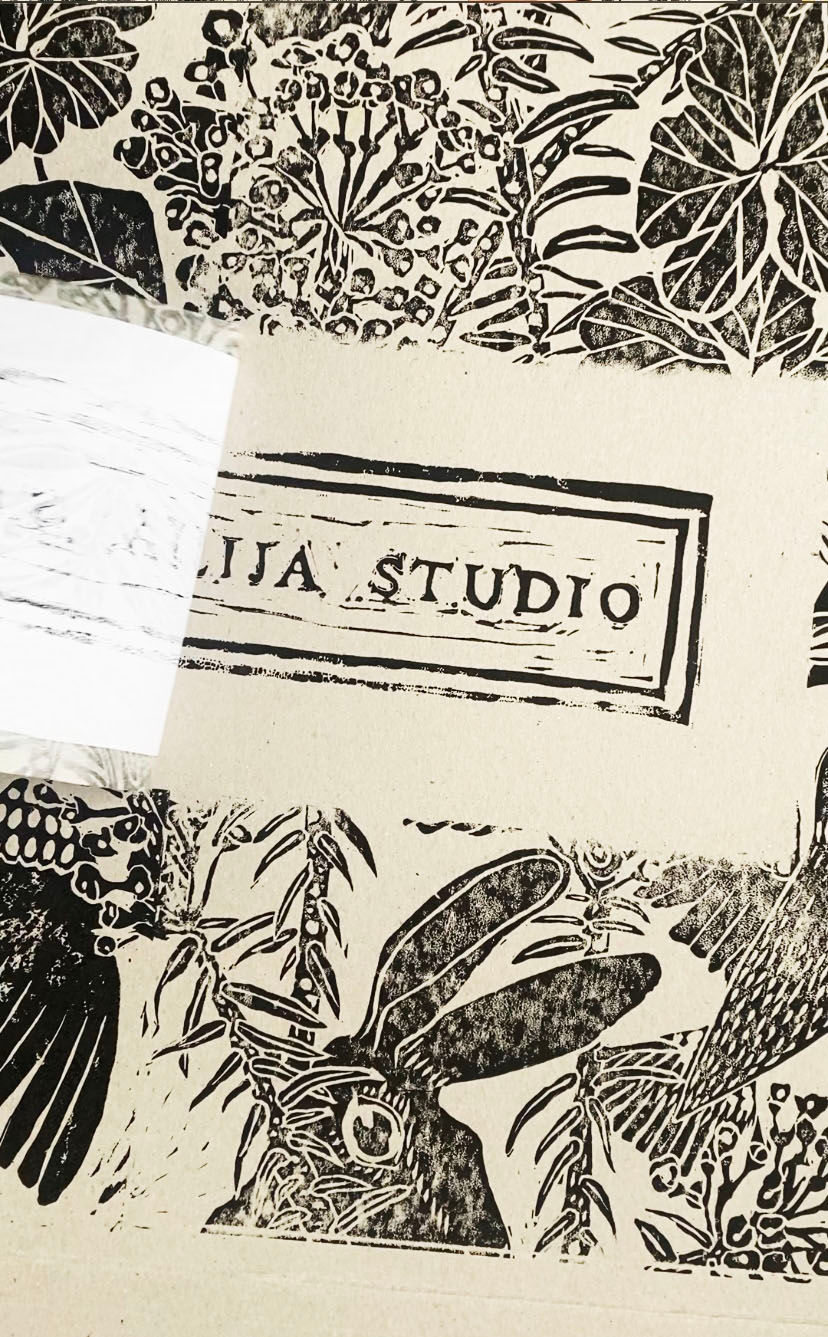Embracing Eco-Friendly Chic: The Importance of Sustainability in Fabric Printing and Pattern Design
- Joanna Natalija White
- Feb 6, 2024
- 3 min read
In a world where environmental consciousness is becoming increasingly crucial, fabric printing in the fashion world and in interiors is facing a transformative shift towards sustainability. This blog post delves into the significance of sustainability in these processes, exploring how conscious choices in fabric printing and pattern design can contribute to a greener and more ethical fashion future. At the heart of my work is wanting to hand-print as much as possible, and to do so in a conscious way, not adding waste or pollution to our our world.

Above: Lily and The Fox hand-printed in linen
Environmental Impact of Traditional Methods:
Traditional fabric printing and dyeing methods often involve a significant amount of water consumption, energy use, and the release of harmful chemicals into the environment. The harsh reality is that these conventional techniques contribute to water pollution, soil degradation, and the depletion of natural resources. Embracing sustainability in fabric printing and pattern design is, therefore, a necessary step towards minimising ecological footprint.

2. Sustainable Fabric Choices:
The first step towards sustainable fabric printing and pattern design is the careful selection of materials. Opting for eco-friendly fabrics, such as organic cotton, Tencel, or recycled polyester, reduces the environmental impact associated with fabric production. These materials often require less water and energy, while also minimising the use of harmful chemicals. Integrating sustainable fabrics into the design process is a conscious choice that aligns with a commitment to environmental
responsibility.

Waterless Printing Technologies:
One of the most revolutionary advancements in sustainable fabric printing is the adoption of waterless printing technologies. Traditional dyeing methods consume vast amounts of water, leading to pollution and scarcity issues. Waterless printing, on the other hand, employs innovative techniques like digital printing and sublimation, significantly reducing water usage. By embracing these technologies, it can contribute to water conservation efforts and create more environmentally friendly fabric printing.

4. Eco-Friendly Inks and Dyes:
Choosing eco-friendly inks and dyes is another crucial aspect of sustainable fabric printing. Traditional dyeing processes often involve toxic chemicals that can harm both the environment and the workers involved in the production. By opting for plant-based dyes or water-based inks, designers can minimise the environmental impact while ensuring the health and safety of those involved in the manufacturing process.
Above: Hand-printing onto recycled cardboard.

5. Circular Design and Zero-Waste Patterns:
Sustainability in pattern design extends beyond the choice of fabric and printing methods. Embracing circular design principles and adopting zero-waste pattern techniques can significantly reduce fabric waste. Designers can create garments with minimal offcuts, utilising the entire fabric piece and contributing to a more sustainable and efficient production process. The fabrics I have used and will continue to use where possible, are all deadstock, meaning they are 'waste' material from fabric that is already in circulation.
Above: Hand-printing a lampshade onto deadstock fabric.
Conclusion:
As the fabric industry grapples with the challenges of environmental sustainability, fabric printing and pattern design emerge as powerful avenues for positive change. By choosing eco-friendly materials, waterless printing technologies, and adopting circular design principles, designers can pave the way for a more sustainable and ethical fashion future. It's time to embrace the beauty of conscious fashion and interiors, where style and sustainability seamlessly coexist. After all, fashion should not only be a reflection of our personal style but also a statement of our commitment to the well-being of the planet we call home.






Comments